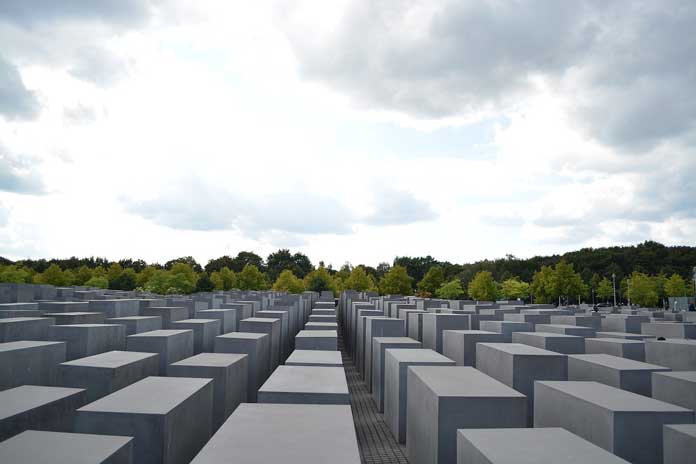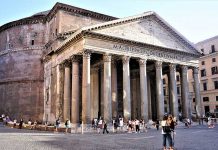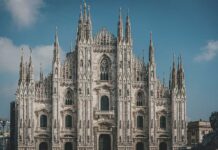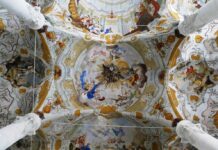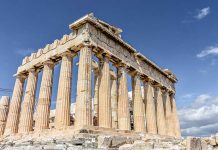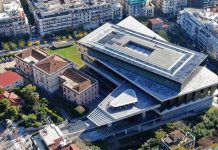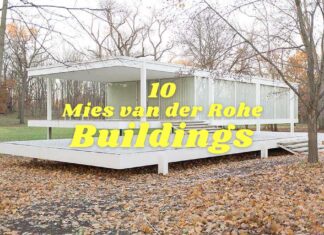Deconstructivism in architecture is the movement of postmodern times that turn upside-down to rules and structural understandings of the modernism. It involves ingredients which looking chaotic, inhabit unbalance and confusion. However, all this unbalances generate a balanced composition together. Deconstructivist philosophy became widespread in the last of 80’s reinterpret the 4th dimension of the cubism. This dimension is time. So much so that, the time, which accompanied by structural elements, is percieved in the way that different by both every aspects and observers, in this structural analysist buildings.
These buildings designed with post-structuralist mind have unguessable and chaotic appearences. Moreover, that is out of question that a definite rule involving all the structure in a way that guessable just like in modern architecture. On the contrary, architects produced structures dominated by instability, confusion and uncertainty, but also very carefully designed. Consequently, thanks to this attention, deconstruction architecture buildings have a balance constituted with imbalances.
Read Also: Balance in Architecture: Achieving Harmony
How did the Deconstructivism in Architecture develop?
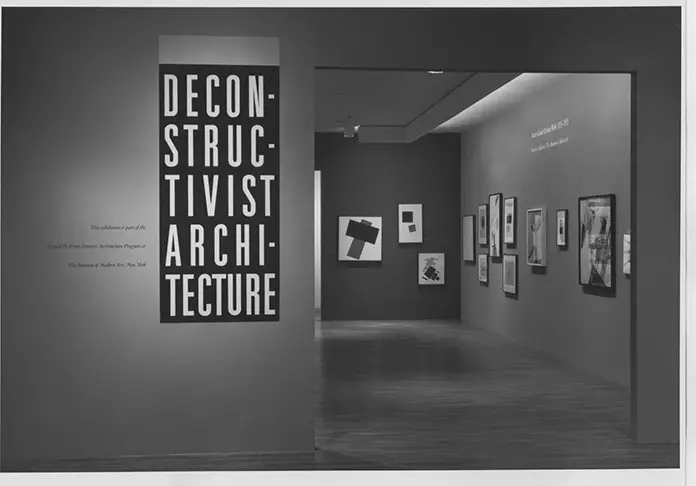
MoMA, the Modern Arts Museum in New York, assambled an exhibiton for the deconstructivist architecture, which already has not complete its growing, in the last of 1980’s. This exhibiton was for the promotion and acception of the movement. The Modern Arts Museum has feature 7 deconstructivist architects as the pioneer architects of the movement when made this promotion. These are: Zaha Hadid, Frank Gehry, Rem Koolhas, Bernard Tschumi, Peter Eisenman, Daniel Libeskind ve Wolf D. Prix’tir. At the same time, these pioneer deconstructivists are among the most effective one’s of the architecture after post-modernizm. Nevertheless, the most of these architects have not regard him/herselves as deconstructive and disclaime this perception.
The idea which the movement get inspired from is the Russian constructivism, alias structuralism, in the beginnings of 20th century. Russian architects had been generating unusual forms by see architectural style as an experiment tool in that period. But sadly, most projects of Russian constructivists have not been inplemented. Nonetheless, images and drawings of their projects have become the source of inspiration for the future architects. Additionally, opinions of the famous architecture philosopher Jacques Derrida have affected deconstructive architects.
Characteristics of Deconstructivism Architecture
In deconstructivism buildings, there are curved and convoluted forms. Moreover, abstract expressionism is in question in the geometries of designs. Deconstructivism in architecture means partitioning structural tectonic of buildings. When every parts or spaces procured with deconstruction of architectural elements is combined with others, they create brand new experimental spaces. Coming together of these forms or spaces with different angles curvedly is one of the main reasons of uncertainity. Users that used to see spaces and things made from rectangles came across unusual spaces in every time they experience deconstructive structures. Because, situations of coming together of fragmanted elements generate extraordinary and surprising spatial feelings. And this exciting condition continues inside spaces in the same way.
Another situation ensures spatial uncertainity is equivocacy of seperator borders. The strict boundaries between earth-sky, up-down, right-left, interior-exterior, which are frequently encountered in modernism, have become indistinct by deconstructivism. To shortly summarize the general features of the deconstruction movement:
- Walls and floors that joined each other at different angles
- Curved surfaces
- The ambiguity in transitions between surfaces
- Dynamic and fragmanted masses
- Carrier elements, bit inside and bit outside
- The feeling of uncertainty and confusion
- Questioning of the strict functionalism of modern architecture
Deconstructivist Architecture Examples
1. Gehry House
It’s one of the first examples that effects of deconstructivism seen. Frank Gehry first bought an old detached house in Santa Monica, USA. Later, he dismantled this house in 1977 and transformed it with new materials and additions. As a result, Gehry has discovered the potentials of wood and various materials in this transformed new structure and brought out an unusual design. In the Gehry House, which got rid of the usual and ordinary architectural judgments, the smooth geometries of the forms have undergone metamorphosis.

2. Parc de la Villette
Parc de la Villette, designed by Bernard Tschumi, is in Paris and was finished in 1987. Spreading over an area of 55 hectares, the park is designed like a playground where users can experience various activities. One of Tschumi’s most interesting decisions was that all the buildings in the park were colored red. Before sending this project to the competition opened in 1982, the architect exchanged ideas with Jacques Derrida, one of the theoretician of deconstructivism in architecture. For this reason, it can be thought that the project was influenced by Derrida’s architectural philosophy.

3. Berlin Jewish Museum
A competition was organised for the Berlin Jewish Museum in 1989 and Daniel Libeskind’s project titled “Between the Lines” won the competition. The museum, which was opened in 2001, has a concept that symbolizes the Jewish life in Europe, just like the Memorial to the Murdered Jews of Europe.To enter the museum, it is necessary to use the Berlin Museum, which is right next to it and designed in Baroque style architecture. Three different routes are waiting for users in the Jewish Museum, which can be accessed from underground through the Berlin Museum. Then, these routes offer different stories and atmospheres such as disappearance, darkness, exile and hope to their visitors.
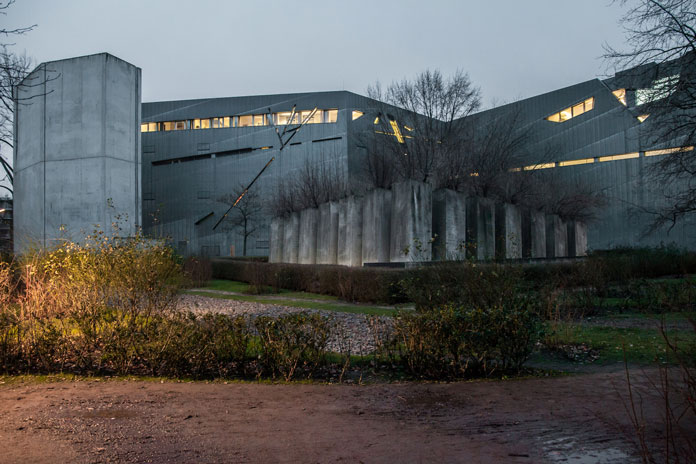
As a result, Libeskind has designed a special concept with the zigzag-shaped Jewish Museum, where experiences and stories form architectural spaces.
4. Bilbao Guggenheim Museum
Bilbao Guggenheim Museum, which is among the examples of deconstructivism in architecture, is Frank Gehry’s work completed in 1997. The different masses in the structure came together in a wavy form. This enabled the creation of a dynamic whole. In addition, the titanium cladding on the façade changes color according to the angle and amount of sun rays, contributing to this dynamism in a different dimension. Furthermore, Guggenheim’s relationship with the river in front of it is extremely strong. The waved form of the Guggenheim Museum reflected in the river is reminiscent of sailing ships struggling in harsh conditions in oceans.
Perhaps Gehry’s most famous work, the Bilbao Museum is so remarkable that most people visit the city just to see this structure. Indeed, the museum alone contributed to the development and identity of the city and was took part as Bilbao Effect in the literature.

5. Wexner Art Center
The design of the museum, which displays the art products of Ohio State University, belongs to Peter Eisenman and Richard Trott. Opened in 1989, the museum is Peter Eisenman’s first project to be built. You can find the official website of the Wexner Art Center here.
6. Memorial to the Murdered Jews of Europe
The monument, designed by Peter Eisenman, was opened in Berlin in 2005. Eisenman argued that the semantic aspect of structures should be similarly understandable by every people. Accordingly, the monument he designed for the memory of the Holocaust has a plan setup in which 2700 plain and rectangular blocks (stele) are brought together in different sizes. It has a rather staid and abstract design, as it is dedicated to the murdered Jews.
While the visitors of the monument experience this place, they do not encounter any information, signs or historical documents. So much so that, people feel like they are in a labyrinth as they wander through the narrowing spaces from time to time. Under the weight of these rectangles, they have the opportunity to question their consciences. According to Eisenman, visitors would thus be able to experience the hardship and atmosphere of the Jews during the Holocaust. But most architectural reviewer are founding the monument’s strict abstractionism excessive.
